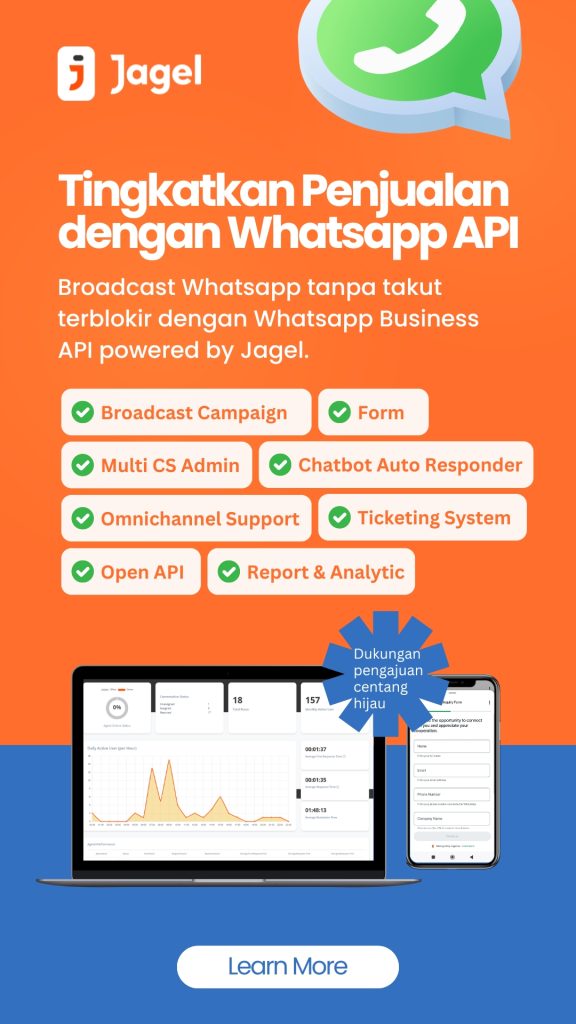
Customer service call centers are the heartbeat of customer interaction, handling everything from phone calls and emails to live chats and social media messages. Shoppers today aren’t just looking for quick solutions, they want to feel valued and understood. For e-commerce call centers, this means finding new ways to deliver top-notch service that stands out from the competition.
In this article, we’ll explore five innovative strategies to revolutionize customer support in e-commerce call centers. To help you turn every customer interaction into a positive experience that builds loyalty and keeps your business thriving.
What are Customer Service Call Centers?
A customer service call center is a central hub that handles support through phone calls, both incoming and outgoing. It can be part of the company or managed by an outside provider. Today’s call centers also use email and social media to offer a better, more comprehensive customer experience through multiple communication channels.
Customer service call centers employ advanced technologies and software, such as chatbots, AI (Artificial Intelligence), CRM (Customer Relationship Management), and IVR (Interactive Voice Response), to efficiently manage communications. They also provide comprehensive training for their agents to handle a diverse array of customer needs, including providing product details, offering technical support, resolving complaints, and processing orders.
Six Strategy
1. Benefits of CRM Systems
In the competitive e-commerce world, advanced CRM (Customer Relationship Management) systems are essential. Here’s why they can transform for your call center:
- Streamlined Interactions: With a CRM, all customer data is integrated into one dashboard. Your team can easily access customer histories, past conversations, and purchase details, making interactions more personalized and efficient.
- Boosted Efficiency: CRM systems automate routine tasks like ticketing and follow-ups, letting agents focus on solving problems and engaging with customers. This speeds up response times and improves overall workflow.
- Data Driven Insights: Advanced CRMs provide powerful analytics and reporting tools. These insights help you understand customer behavior, track performance, and make informed decisions to enhance support strategies.
- Personalized Service: Detailed customer profiles allow agents to tailor interactions based on purchase history and preferences, making each customer feel valued and understood.
- Better Team Collaboration: CRM systems improve team communication by allowing shared access to customer data and case notes, ensuring everyone is aligned and supports faster problem resolution.
2. Utilize Omni-channel Support
- What is Omni-channel Support?
Omni-channel support is an integrated approach to customer service that ensures a seamless experience across multiple communication channels such as phone, email, chat, and social media. It allows customers to switch between channels without having to repeat themselves, creating a smooth and consistent service experience. This approach helps businesses provide efficient and cohesive support, enhancing overall customer satisfaction.
- How to create an omnichannel customer service strategy?
Creating an omnichannel customer service strategy goes beyond just being innovative, it’s about building strong, trust-based relationships.
Here’s how to develop an omnichannel approach that meets customer expectations, builds loyalty, and promotes business growth.
3. Offer a Seamless Omnichannel Experience
A seamless omnichannel experience ensures customers don’t need to repeat themselves or lose context when switching between platforms. It’s about making transitions smooth and recognizing the customer’s journey no matter the channel.
Tips for Implementation:
- Integrate systems to allow smooth data flow between channels.
- Ensure technology supports easy handoffs to live agents when necessary.
- Maintain consistency across all communication channels.
Example: A customer starts a support chat on social media and needs more help, so they switch to live chat. The transition is seamless, and the chat agent is already up to date on the issue, creating a cohesive experience.
Leverage New Technologies
Incorporating the latest technologies helps you stay competitive and offer innovative, intuitive experiences. AI chatbots, predictive analytics, and cloud platforms can enhance interactions by anticipating needs and personalizing communication.
Tips for Implementation:
- Select a CPaaS (Communications Platform as a Service) that integrates with your current systems.
- Use AI for handling routine queries, so human agents can focus on more complex issues.
- Analyze data regularly to adjust your strategy based on customer preferences.
Example: During a live chat, a customer mentions a minor issue. Your AI system records this and sends a follow-up email a few days later to check on the issue and offer additional help. This proactive approach shows your brand’s responsiveness and care.
4. Leverage AI and Automation
A. AI Tools for Customer Support
AI tools are revolutionizing customer support by enhancing efficiency and personalization. Key tools include:
- Chatbots: Provide instant, round-the-clock responses to common inquiries.
- Virtual Assistants: Offer personalized support and recommendations based on customer data.
- Predictive Analytics: Anticipate customer needs and behavior to enable proactive support.
- Automated Ticketing Systems: Streamline ticket management by automating creation and routing.
- Natural Language Processing (NLP): Improve response accuracy by understanding and interpreting customer language.
B. Strategy for Leveraging AI and Automation in Customer Support
- Implement AI Tools:
- Deploy Chatbots: Use chatbots to handle routine inquiries and provide 24/7 support, freeing up human agents for more complex issues.
- Integrate Virtual Assistants: Utilize virtual assistants to deliver personalized support and recommendations based on customer interaction history.
- Enhance Support with Predictive Analytics:
- Anticipate Needs: Use predictive analytics to forecast customer needs and behavior, allowing for proactive outreach and personalized service.
- Automate Ticket Management:
- Streamline Processes: Implement automated ticketing systems to handle ticket creation and routing, reducing manual workload and speeding up response times.
- Leverage Natural Language Processing (NLP):
- Improve Accuracy: Apply NLP to better understand and interpret customer queries, enhancing the precision of responses and overall support quality.
- Monitor and Optimize:
- Track Performance: Continuously monitor the performance of AI tools and automation systems to ensure they meet customer needs and adjust as necessary.
- Gather Feedback: Regularly collect feedback from customers and support agents to refine AI tools and improve the overall support experience.
5. Embrace the Entire Customer Journey
Optimizing the entire customer journey is key to creating a memorable experience. It’s not just about making sales but ensuring each interaction, from the initial contact to post-purchase support, is smooth and meaningful.
Tips for Implementation:
- Use tools that give a full view of customer interactions across all channels.
- Train your team to leverage these insights for personalized support.
- Regularly update your approach based on customer feedback.
Example: A customer looks at products on your app but doesn’t buy. Later, they get a personalized email with a discount to encourage them to complete their purchase. When they seek support via chat, the agent already knows about their recent activity, making the experience seamless.
6. Monitor and Analyze Performance Metrics
A. Why Monitoring Metrics is Crucial
In the competitive landscape of e-commerce, tracking and analyzing performance metrics is essential for elevating customer support.
Track Key Metrics:
- First Response Time: Measures the speed at which your team responds to customer inquiries. Shorter response times generally lead to higher customer satisfaction.
- Resolution Time: Assesses the duration it takes to fully resolve customer issues. Efficient resolution is crucial for maintaining a positive customer experience.
- Customer Satisfaction Score (CSAT): Reflects customer contentment with their support interactions, typically gathered through post-service surveys.
- Net Promoter Score (NPS): Evaluates how likely customers are to recommend your business to others, providing insight into overall loyalty and satisfaction.
- First Contact Resolution (FCR): Indicates the percentage of issues resolved in the first interaction, showcasing the effectiveness of your support team.
B. Analyze the Data:
- Identify Trends: Examine metrics to uncover patterns and recurring issues, which can help in addressing common problems and optimizing resource allocation.
- Evaluate Agent Performance: Use metrics to assess individual agent effectiveness, identify training needs, and highlight top performers.
- Optimize Processes: Leverage insights to streamline operations, reduce delays, and enhance overall support efficiency.
STRATEGY
Based on the goals of analyzing data for trends, evaluating agent performance, and optimizing processes, here’s a comprehensive strategy to address these objectives:
Data-Driven Optimization Strategy
1. Data Collection and Integration:
- Gather Comprehensive Metrics: Collect data on key performance indicators (KPIs) such as response time, resolution time, customer satisfaction scores, ticket volume, and agent productivity.
- Centralize Data Sources: Integrate data from various channels (e.g., email, chat, phone) into a single analytics platform to ensure a holistic view.
2. Trend Analysis:
- Identify Patterns: Use statistical analysis and visualization tools to detect recurring issues, peak times, and common customer complaints.
- Segment Analysis: Break down trends by different variables (e.g., time of day, type of issue, customer demographics) to pinpoint specific areas needing attention.
3. Agent Performance Evaluation:
- Performance Metrics: Analyze individual agent metrics such as average handle time, first contact resolution rate, and customer feedback.
- Benchmarking: Compare agent performance against industry standards and internal benchmarks to identify high performers and those needing improvement.
4. Training and Development:
- Identify Training Needs: Use performance data to determine gaps in skills or knowledge. For example, if certain agents struggle with complex issues, provide targeted training on those topics.
- Develop Training Programs: Create and implement training modules based on common challenges and performance gaps identified through data analysis.
5. Process Optimization:
- Streamline Operations: Identify bottlenecks and inefficiencies in current processes. For instance, if data shows that response times are high during specific shifts, consider adjusting staffing levels or improving workflows for those times.
- Implement Automation: Leverage automation tools for repetitive tasks like ticket routing or basic customer inquiries to reduce workload and improve efficiency.
6. Continuous Improvement:
- Regular Review: Establish a routine for regularly reviewing performance data and trends to ensure that improvements are sustained, and new issues are addressed promptly.
- Feedback Loop: Incorporate feedback from agents and customers into the optimization process to refine strategies and adapt to changing needs.
7. Reporting and Communication:
- Performance Dashboards: Develop dashboards for real-time visibility into key metrics and trends. Share these insights with relevant stakeholders to foster transparency and informed decision-making.
- Actionable Insights: Present findings in actionable formats, such as detailed reports or summary briefs, to guide strategic decisions and operational changes.
Execution Plan
The execution plan begins with a kickoff meeting to set clear goals and gather data sources. Next, choose and set up the right tools for collecting and analyzing data. Integrate all data, ensuring it’s accurate and complete. Start by analyzing trends to spot key patterns and issues. Review agent performance to find areas for training and improvement. Look at current processes to identify where changes can make a difference. Use these insights to implement new training and process improvements. Keep an eye on how things are going, make adjustments as needed, and regularly update everyone involved to keep them informed and engaged.
Conclusion
To improve customer support in e-commerce call centers, integrate advanced CRM systems to streamline interactions and personalize service. Implement an omnichannel strategy for seamless transitions between communication platforms. Utilize AI and automation, like chatbots and predictive analytics, to handle routine tasks and enhance efficiency. Continuously optimize the customer journey through data-driven insights, performance monitoring, and process improvements. This comprehensive approach builds better customer relationships and drives business growth.
